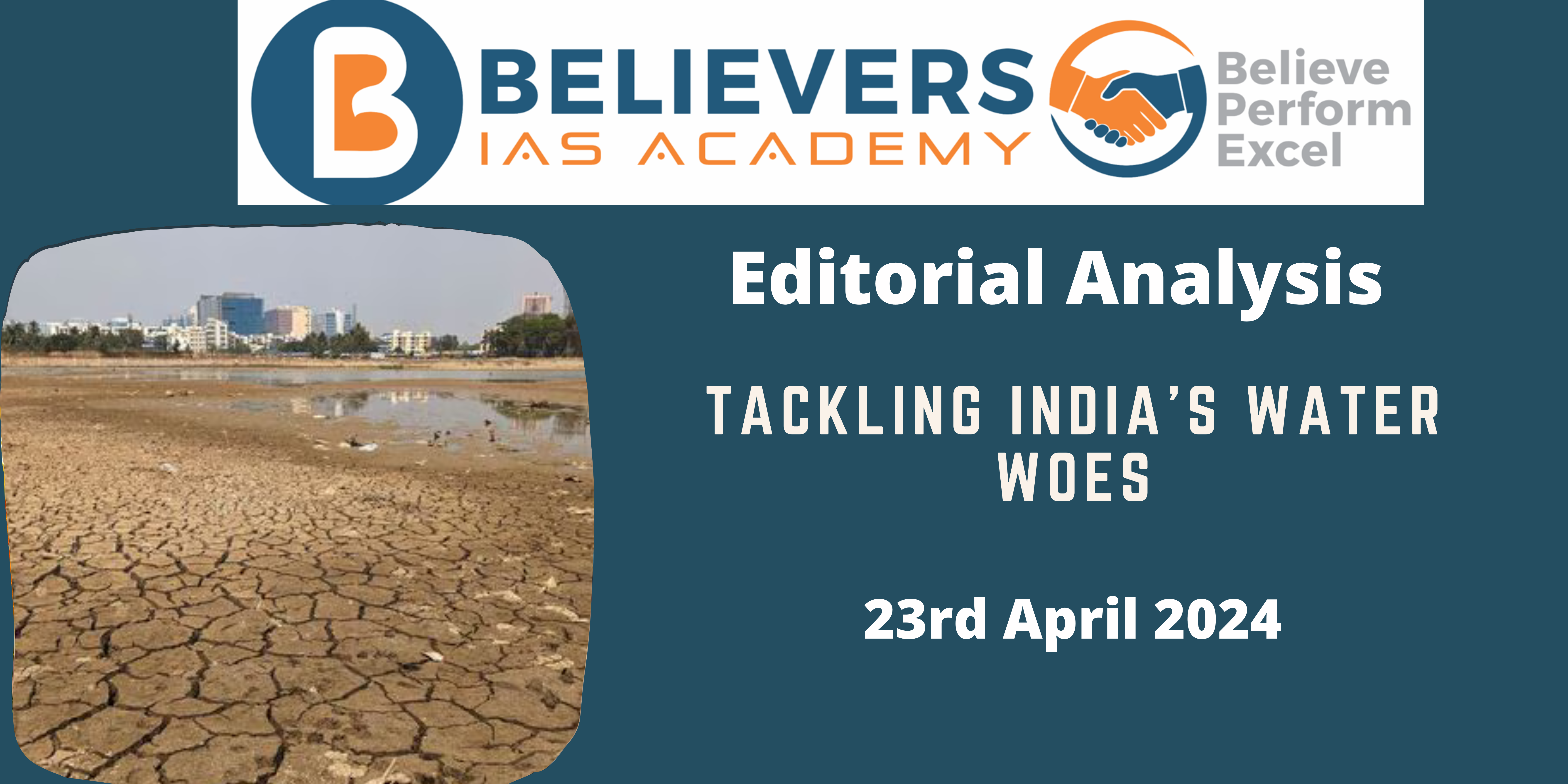Tackling India’s Water Woes
Context:
As the India Meteorological Department (IMD) forecasts a scorching summer with prolonged heat waves from April to June, India faces the daunting challenge of water stress.
- With India housing 18% of the global population but only 4% of freshwater resources, the need for proactive measures to address water-related challenges is urgent.
Relevance:
GS-01 GS-03 (Physical Geography, Conservation)
Mains question:
The climate is the economy now, and understanding the crucial intersections between land, food, energy and water will influence how the economy functions, Comment. (250 words)
Dimensions of the Article:
- What is the Issue
- Current Challenges
- Implications
- Suggested Measures
What is the Issue:
- Weather patterns: The changing climate brings about unpredictable weather patterns, exacerbating the situation. Traditional disaster preparedness measures are no longer sufficient to tackle these evolving challenges.
- Multifaceted Factors: India’s water woes stem from a combination of factors, including pollution of rivers, dwindling reservoir capacities, and overexploitation of groundwater.
Current Challenges:
- Agriculture, a sector employing nearly half of India’s population, is particularly vulnerable to climatic fluctuations. Changing rainfall patterns disrupt crop cycles, affecting sowing, irrigation, and harvesting.
- Additionally, water scarcity impacts clean energy initiatives such as green hydrogen production and pumped storage hydropower.
- The frequency of hydrometeorological disasters, including floods and landslides, continues to rise, posing a threat to lives and livelihoods.
Implications:
- The ramifications of India’s water crisis extend beyond its borders, holding valuable lessons for other water-stressed nations. Failure to address water security jeopardizes domestic supply, food production, and the transition to clean energy.
- Inadequate governance and policy frameworks exacerbate the situation, hindering effective water management.
Suggested Measures:
- Policy Reform: India must adopt holistic water governance policies that recognize the interconnectedness of water with food and energy systems. Policies should integrate localized evidence and community engagement to address the food-land-water nexus effectively.
- Water Conservation: Focus on judicious water use through water accounting and efficient reuse. Initiatives like the National Water Mission and AMRUT 2.0 must be backed by robust data and baseline assessments to quantify water savings accurately.
- Financial Investment: Increase funding for climate adaptation in the water sector. While India has predominantly focused on climate mitigation, more significant investments are needed to strengthen wastewater management, promote climate-resilient agricultural practices, and scale up alternative water sources like desalination plants.
Conclusion:
Despite the enormity of the task, incremental steps towards coherence in water, energy, and climate policies, bolstered by data-driven approaches and innovative financial instruments, can pave the way for a water-secure and climate-resilient economy.



